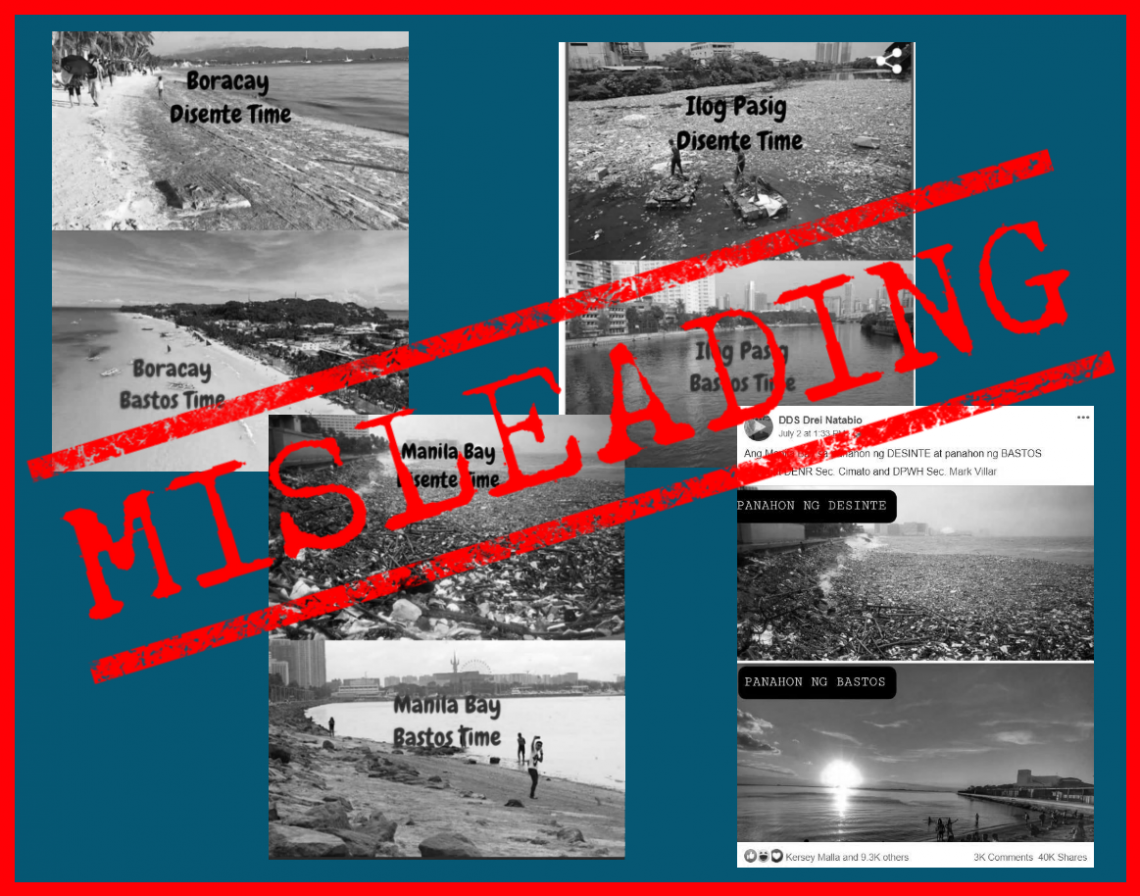Manila – Metro Manila was spared the wrath of typhoon Ompong (international name Mangkhut), which hit Northern Luzon hard, but the heavy rains caused flooding and the scourge of plastic wastes surfaced once again.
Using trash boats from the Pasig River Rehabilitation Commission (PRRC), environment activist group Greenpeace, together with the Nagkakaisang Mananambakan ng Dumpsite Area (NMDA), conducted a rapid assessment of plastic wastes along Pasig River on Sept 17, two days after the typhoon dumped rains on the capital.
A total of 1,006 pieces of single-use plastics were collected in one hour. Familiar images confronted the environment advocates: plastic waste from Monde Nissin, JBC Food Corp. and 7-11.

Audit results showed that 7.95 percent of the wastes came from Monde Nissin, makers of Lucky Me! Instant Noodles, making them the biggest source of wastes in Pasig River. JBC Food Corporation followed with 7.06 percent, while 7-Eleven ranked third with its food packets constituting 6.16 percent. Among other brands were PT Torabika, Rebisco (Republic Biscuit Corp.), Nestle, Zesto, Unilever, Liwayway (Oishi) and Mondelez.
“As if the scourge of typhoons and monsoons is not enough, these companies leave it us to take care of the single-use plastic wastes they produce and already profited from,” said Abigail Aguilar, campaigner for Greenpeace Philippines.
The post-Ompong activity is part of Greenpeace Philippines’ #breakfreefromplastic Movement. “This is part of the Greenpeace plastics campaign where we want to call attention to the role of corporations in the plastic pollution problem. Usually it’s only the government and individuals who are being blamed. The corporations who are the ones who promote and produce single use products do not get blamed. That’s what we want to highlight,” she said in Pilipino.
What Greenpeace Philippines seeks, she said, is for the companies to devise concrete plans to lessen their use of single-use plastics.
“We are already reeling from the effects of extreme weather conditions brought about by climate change, and yet we are left with the unfathomable consequences of plastic pollution. We need each of us to change our behaviors and reconsider the perception of convenience from single-use plastics. Companies, on the other hand, need to step up and rethink how their products are being packaged and delivered.”
In a study on River plastic emissions to the world’s oceans published in Nature Communications June 2017, the Pasig River ranked eighth among the top 20 polluting rivers, based on the global river plastic inputs model. The study showed that the river dumps up to 63,700 tons of plastic — equivalent to more than 10,600 elephants in terms of weight — into the ocean each year.
Greenpeace Philippines started the initiative in 2017. In a similar activity last September 2017, the organization collected 54,260 pieces of waste after a week-long clean up drive and brand auditing in Freedom Island, part of the Las Piñas-Parañaque Critical Habitat and Ecotourism Area (LPPCHEA) which serves as a sanctuary for migratory birds.

Sachet Economy
For developing countries such as the Philippines, eradicating the practice of single-use plastic can be challenging. This is because the country’s pollution problem runs deeper than an environmental issue. World Widlife Fund (WWF) stated in a report earlier this year that the Philippines’ pollution problem is rooted in two main variables – poverty and the lack of proper waste disposal.
Running on a “sachet economy,” high-end products in our country are being sold in small quantities to make them more accessible to consumers with limited income. Shampoo, toothpaste, soap and powdered detergent sold in sachets constitute a large market for fast-moving consumer goods.
But with its low cost and convenience comes the tremendous pollution problem. Plastic debris and ribbons of sachets that are haphazardly disposed end up in the waterways, contributing to flood and destruction of marine life. Aside from contaminating the waters, WWF reported that ingestion and entanglement in plastics in the ocean have been documented in marine wildlife such as seabirds, turtles, and marine mammals.
Environmental groups and activities aimed at reducing wastes continue to grow in number. And while advocates focus on seeking individual responsibility and call for more governmental intervention, Greenpeace is determined in calling out corporations for their accountability regarding the plastic pollution problem.
This story is produced by VERA Files under a project supported by the Internews’ Earth Journalism Network, which aims to empower journalists from developing countries to cover the environment more effectively.



